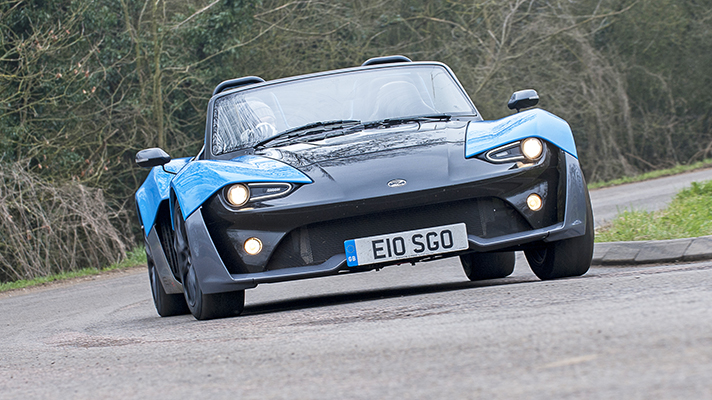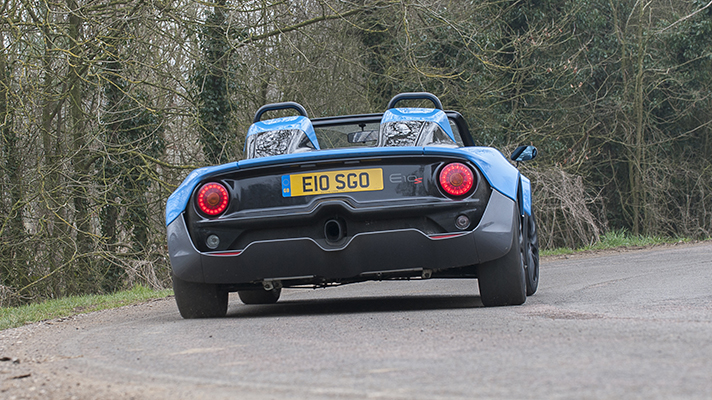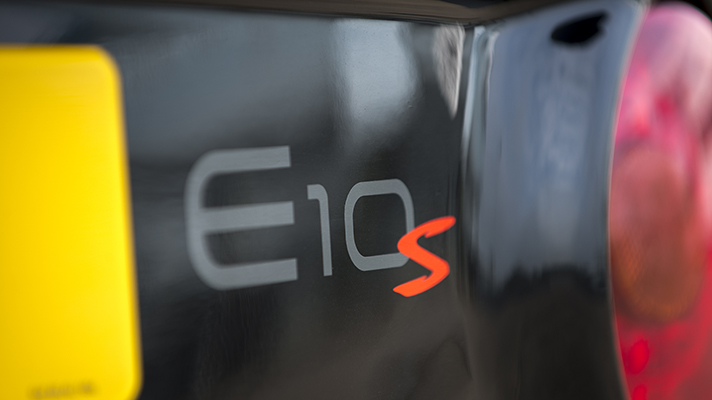
SPEC HIGHLIGHTS
- BHP
247bhp
- 0-62
4s
- CO2
155g/km
- Max Speed
145Mph
What's this little thing then?
It's the Zenos E10 S. If you think it looks primed and ready to take on trackday stalwarts like the Caterham Seven, Ariel Atom and KTM X-Bow, you'd be spot on.
The Zenos's bald numbers make it extremely competitive. It uses the engine from the Ford Focus ST, an exceedingly punchy turbocharged 2-litre four-cylinder, providing the E10 S with 247bhp with which to propel its 850kg.
A Focus feels blooming fast with this drivetrain: with 600 fewer kilos to shift and a worm-like centre of gravity, the Zenos can be scintillatingly swift if you want it to be. Its top speed is 145mph, while 0-60mph takes four seconds. Yet it starts at £29,995 (£5000 less buys a 200bhp, naturally aspirated E10, though very few customers have chosen that over its more powerful sibling).
Spend £30,000 on a Lotus Elise and you'll have just 134bhp and take 2.5 seconds longer to hit 60mph. But if you're worried such value betrays a lack of integrity, fret not: the men behind Zenos have built up their experience from years at Lotus and Caterham.
So is the E10 just like those cars?
In its ruthless, roofless pursuit of fun, it is. But its approach is a little alternative. Its construction cleverly balances strength and lightness, a lightweight, honeycombed carbon composite tub sitting atop an aluminium spine, which is visible thanks to the lack of any superfluous trim.
And while track-focused tech lies on the options list, the E10 has been set up first and foremost as a road car, and as such it's approachable in a way some of its rivals are not.
With no doors, you'll need to flex your appendages to clamber over the high sill, before awkwardly shuffling down into its fixed bucket seat, as is par for the course in small-industry sports cars. But once there, the driving position should quell any nerves, being at once protected from the elements yet not intimidatingly low-slung and serious.
The manual gear lever - familiar from that Focus - is easy to reach and connected to a regular, three-pedal setup. No awkward paddles or scary sequential shifting to learn here.
And the steering wheel, wrapped in lovely suede, is a nice size and sits in front of a clear electronic display of your speed and revs, which is legible whatever the weather's doing. A small detail, perhaps, but a pivotal one.
And to drive?
The friendliness continues. The non-assisted steering weights up satisfyingly with speed and is brimming with information, while the pedals are nicely positioned and the gearchange slick. There's even a normal handbrake.
Cool though its three-tone colour scheme looks, the E10 is styled that
way for a reason: smaller panels are cheaper to replace if you have an
unplanned excursion. But while ABS or any form of electronic nannying is inevitably absent, this is not a lairy, scary car. We've been getting to grips with it on cold and slimy British back roads, and while it will slide in such conditions, it won't snap there unpredictably, and you don't feel like you're fighting it at every corner like you might a Caterham with such prodigious power.
That's a real achievement, because the turbo engine itself is rather boosty, but linear throttle response stops you from unintentionally upsetting the rear tyres. On the flipside, it will encourage you to intentionally do so if you're of a sideways penchant.
When the road (or track) is dry, though, grip is abundant and just how much speed you can maintain is impressive. For a punchy mid-engined car, the E10 feels very cocooning, and allows you to build up your confidence levels - and therefore your pace - very swiftly.
This is helped along by its double wishbone suspension, which comes as standard with a fairly do-all setup. Big bumps are telegraphed noticeably on urban roads, but with a bit more speed, everything flows just nicely.
What about on track?
Options list ticking can bring adjustable damping if you're a little more serious about these things, but most of the 100 or so E10 buyers thus far have kept things simpler, and our test car - shorn of the optional limited-slip differential, sharper steering rack and uprated suspension - reflects this.
Even so, it feels capable on circuit, majoring on stability, confidence levels even higher than on the road once sufficient warmth is in its tyres. The frivolity of a Caterham, which dances around corners without much provocation, is missing. But then the Zenos is proudly something else: a car with track talents that don't require oodles of skill, bravery or silliness to extract them.
Is it a winner?
The Zenos doesn't make us giggle like a supercharged Atom or Superlight Caterham. But then it doesn't widen the eyes or overly sharpen the pulse like those, either.
Nail it through all of its gears and it's flipping quick, while if you awaken its more flamboyant side it's plenty of fun. But its real trick is satisfying away from those extremes. Think of it as a decent beer in a market of speciality craft ales; it provides much of the enjoyment and satisfaction, but to a broader, less experienced bunch of people.
And once you're up to speed with the Zenos, don't forget there's a Focus ST engine in there: a quick visit to Mountune ought to crank up its aggression markedly...
Top Gear
Newsletter
Thank you for subscribing to our newsletter. Look out for your regular round-up of news, reviews and offers in your inbox.
Get all the latest news, reviews and exclusives, direct to your inbox.
Featured







